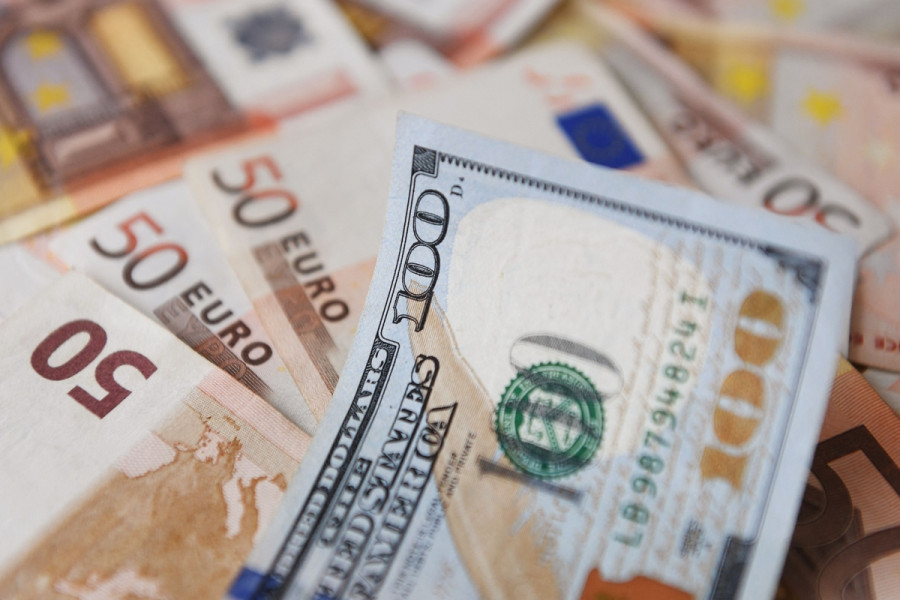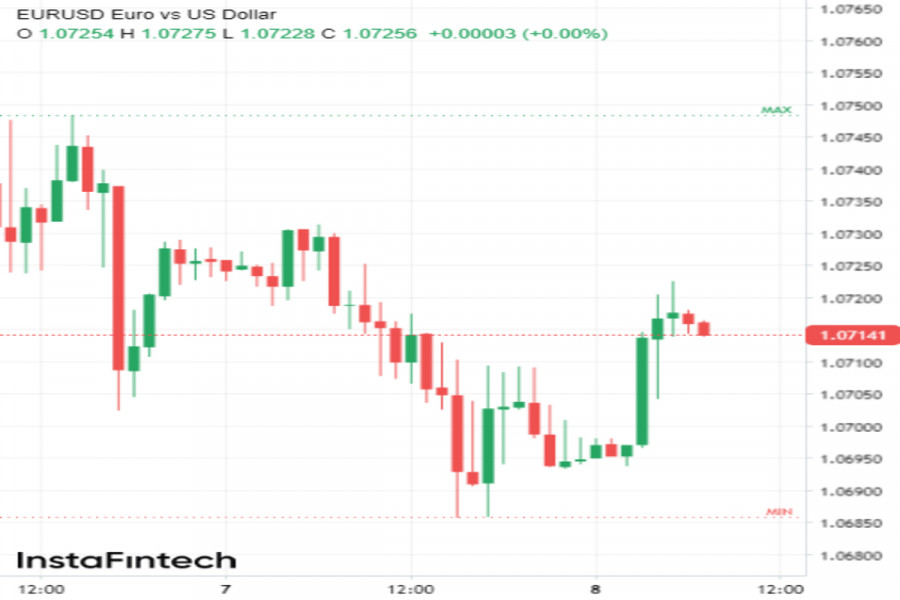This morning, the EUR/USD pair is moving up as part of a correction after falling yesterday to its lowest level in three months at 1.0686. Meanwhile, many analysts believe that the pair is destined to decline further, predicting new lows in the near future. Let's delve into the potential downside risks for EUR/USD, especially if the European Central Bank (ECB) rolls out the worst-case scenario for the European currency next week.
USD gets another boost
Yesterday, the US currency surged in value following the release of the US Department of Labor's weekly jobless claims report. According to the data, last week's figures unexpectedly hit their lowest reading since February, registering only 216,000 claims. Economists had predicted the number of initial unemployment claims would rise to 234,000.
A separate report revealed that the productivity of American workers in the second quarter was not as high as initially reported, but it still remained stable. Year over year, the metric measured by hourly output per worker rose by 3.5% from April to June, compared to an initial estimate of 3.7%. This is the highest value since the third quarter of 2020.
Clearly, the latest data suggests that the US labor market remains resilient, despite the prolonged aggressive policy of the Federal Reserve. This casts doubt on the end of the interest rate-hiking cycle in the US and supports a strengthening dollar across the board.
Last Thursday, the greenback jumped by 0.19% against a basket of major currencies, reaching a level of 105.05. Against its main rival, the euro, USD rose by almost 0.3%, testing the 3-month high of 1.0686 during the session.
EUR takes another blow
The recent decline in EUR is primarily linked to pessimistic macroeconomic data from the European Union. A shocking industrial production report from Germany was released yesterday, highlighting significant cracks in the European economy.
According to the data, German industrial production fell by 0.8% in July. This is double what economists had forecasted.
"Now that we have the full set of macro data for July, stagnation in industry and the economy seems like the new norm for Germany, the EU's largest economy. This suggests that the risk of a recession in the eurozone is again very high," commented analyst George Vessi.
Many experts believe that concerns about slowing economic growth in Europe could influence the ECB's interest rate decision next week or its subsequent monetary policy strategy.
The slowdown of the Eurozone's economy appears to be quite dramatic. "This might compel the ECB to abstain from raising its rate in September, which could lead to further weakening of the euro," said currency strategist from CIBC Capital Markets, Jeremy Stretch.
According to the expert's forecast, the ECB's inertia amidst weak economic data might result in the EUR/USD pair falling to the low of 1.0635 last registered on May 31.
However, most analysts, including economists from ING Bank, still anticipate that the ECB will increase the rate in September. Yet, will the euro benefit from this move? This time, it is highly unlikely.
Considering the negative trends in the European economy, the ECB can no longer pretend that everything is normal. If the regulator starts talking about a recession, the market will most likely interpret it as a dovish signal.
In such a scenario, the euro will not benefit from another round of tightening, especially as fundamental factors are increasingly leaning towards the strengthening of its main opponent - the dollar.
Factors driving USD
Starting Monday, the American currency appreciated against its main rivals by 0.7%. Currently, the US dollar index is set to mark its eighth consecutive week of growth, making it the longest winning streak for the greenback in nine years.
The current USD rally is driven by strong economic data. The statistics released this week showed that the US services sector unexpectedly picked up in August, significantly bolstering hawkish market expectations regarding the Federal Reserve's future policy.
At present, most market participants still expect the American regulator to pause its rate hikes at its September meeting. However, in the past few days, the likelihood of an additional round of tightening in the US this year has risen to nearly 50% from 40% a week earlier.
Furthermore, many investors have lowered their forecasts concerning the imminent easing of Quantitative Tightening (QT) in the US. The market now believes that a stable economy will allow the Federal Reserve to maintain high interest rates for a longer period.
Moreover, the dollar continues to benefit as a safe-haven currency. Current US economic growth figures still appear much more robust compared to other major world economies.
This week, it became crystal clear that both Europe and China are slowly but surely moving towards a recession, which triggered a new surge in demand for the protective greenback.
Analysts predict that as fears of a global economic slowdown escalate, the dollar will continue to strengthen against the euro and other risk assets.
Some experts also believe that the recent surge in oil prices may provide an additional boost to the already rising dollar in the medium term.
























